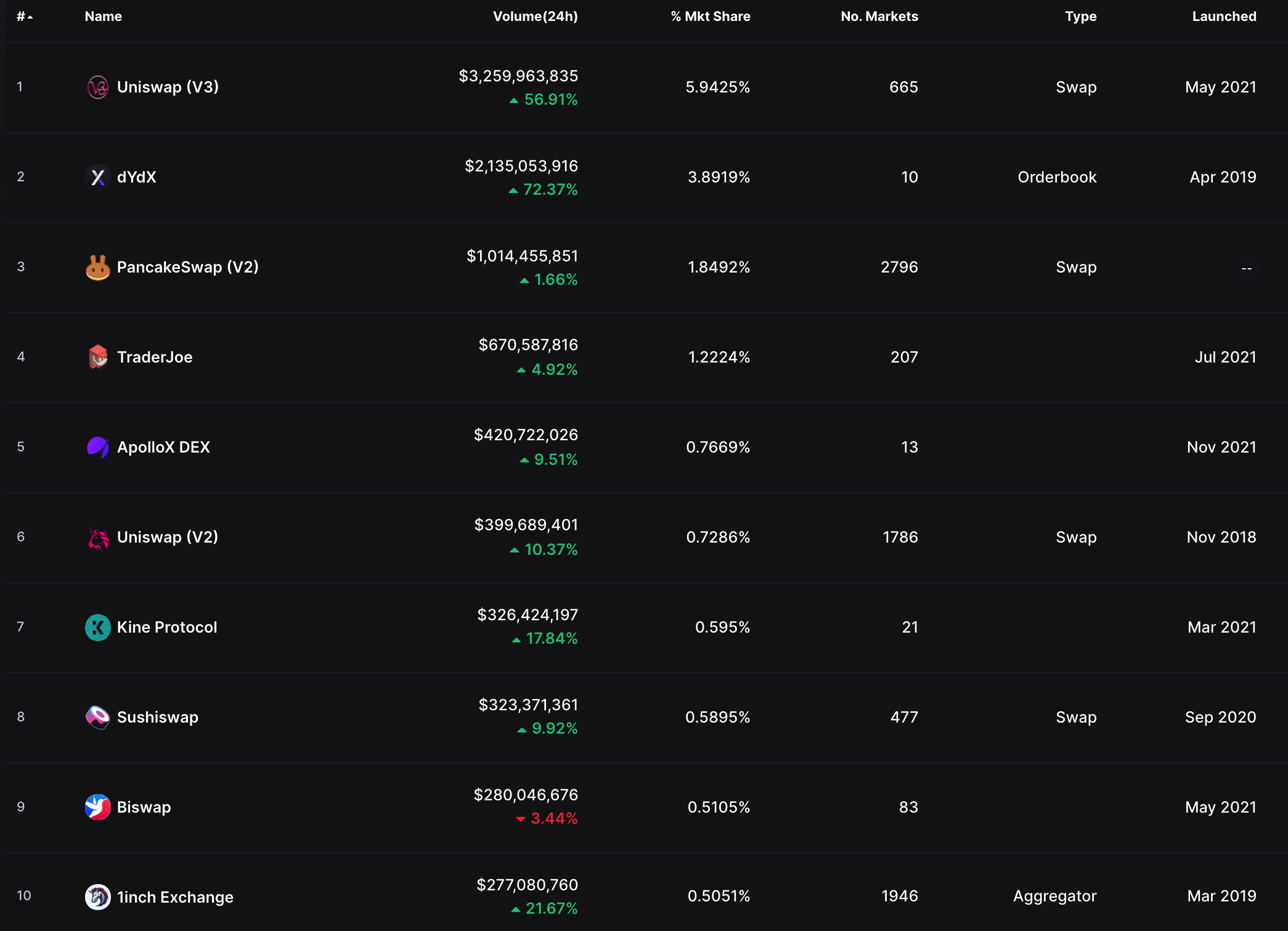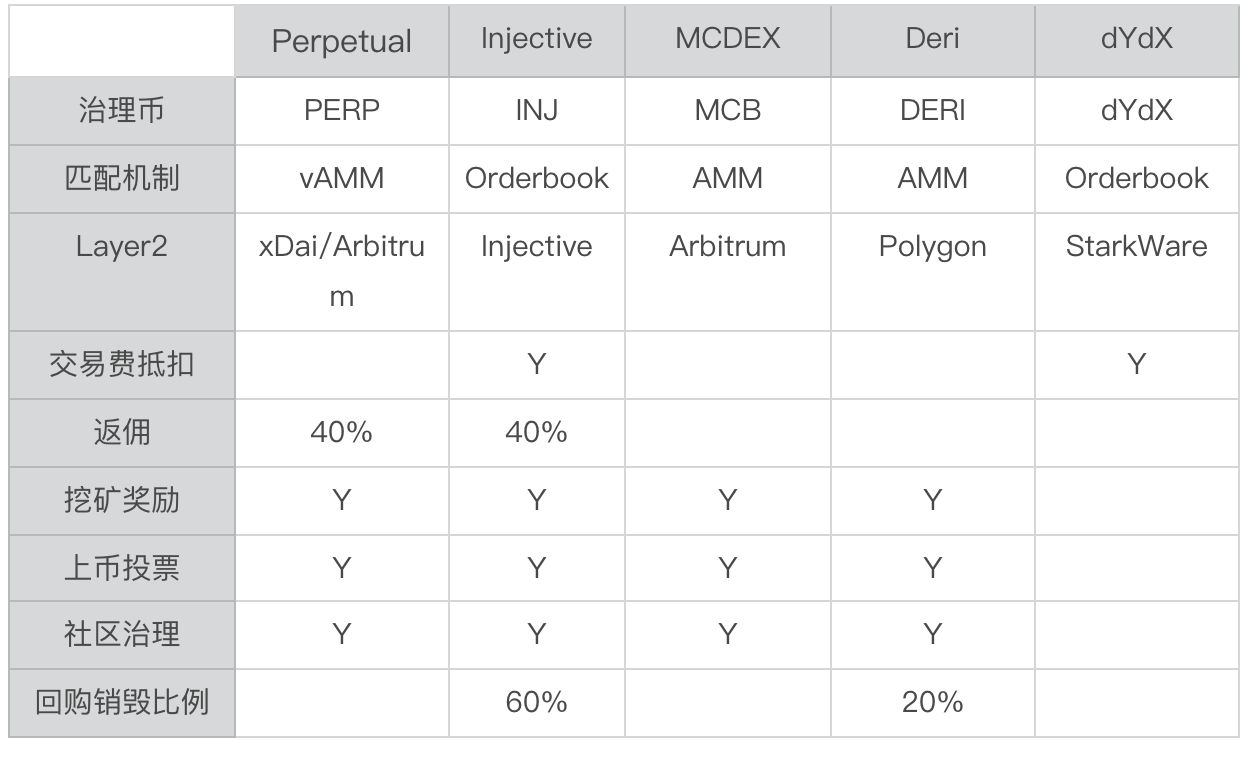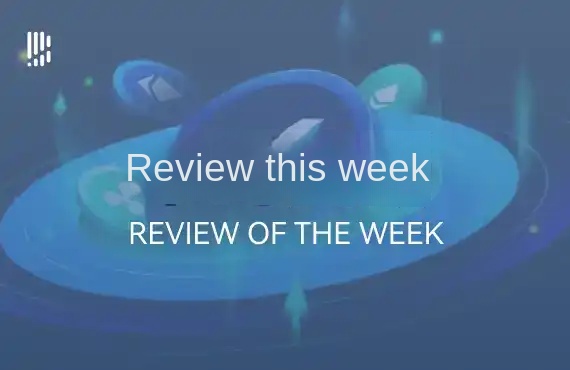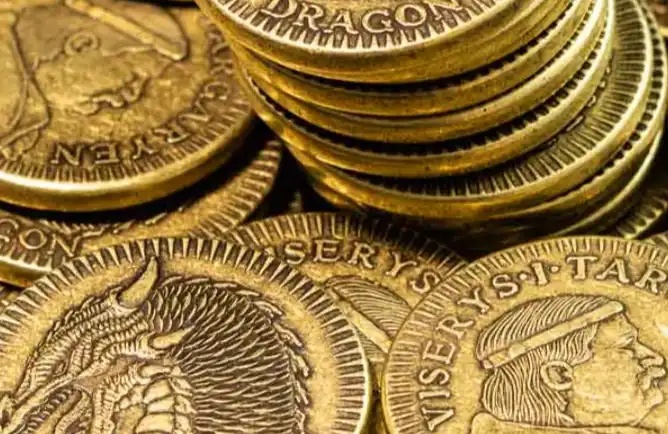How does INJ capture the value of DEX from the perspective of first repo destruction?
CaptainZ
The emergence of Token trading platform
The birth of Bitcoin has spawned a variety of cryptocurrencies, one of which is the exchange platform Token. The exchange platform Token was first born in 2013 and was issued by the early exchange platform Bitcoin era. Holders can enjoy dividends in proportion to their holdings. But unfortunately, cryptocurrencies were less well known at the time, and the model was even less well recognized in those days, so it didn't take off. Four years later, Binance again opened the Taiwan dollar, better known as BNB, to use as fuel to offset transaction fees.
The emergence of the Taiwan dollar was controversial at the very beginning. Many people doubted that it was essentially equivalent to the deposit fee, and that the cryptocurrency issued by a trading platform was reliable and could only be circulated and used on this trading platform. There were few initial bulls on BNB, so it was sidelined for a while. After Binance announced that it would buy back and destroy a portion of the BNB each quarter based on profit, and many speculators who trade frequently found BNB to be the best way to save on transaction fees anyway, BNB's transaction value began to increase and eventually became one of the top five mainstream coins by market cap. The BNB price has been so high that two other trading platforms, Huobi and OKEX, have followed suit, issuing their own Taiwan HT and OKB. Since then, the flat Taiwan dollar has become the focus of each trading platform, and more and more trading platforms began to issue their own flat Taiwan dollar.
Initial trading platform of flat t, exists in the form of Token. The main purpose is to touch buckle poundage get discount repurchase and profit, also can be said to capture part of the dividend rights (such as BNB to repurchase is a quarterly profit of 20%), with a flat t receive dividends valuation model is the most popular computing P/P/E, To measure the ratio of the current price of an average nt dollar to its average yield.
P/E ratio = market price/net profit
= 20% of BNB's market value/BNB's annual net profit
However, the situation changed in 2020. Major platforms began to develop their own public chains, which added the tool properties of fuel on top of the bonus rights. After all, the development of the company has an upper limit, but the valuation of the public chain has no upper limit, and the valuation model will return to the direction of "smart contract public chain currency". Smart male chain contract currency at present, there is no good valuation models, the main reason lies in the assets themselves and no cash flow source, the main function is used as fuel (Gas) block chain network, so as long as more people use the network, money becomes more valuable, so we used to reference data is, in the block chain project issued by the above amount, ChiBiRen address number, The total value of assets issued on the blockchain.
CEX flat nt value capture

Overview of centralized Exchange Usage Scenarios (Source: PAData)
The revenue performance of Taiwan dollar is closely related to its value source, which mainly depends on the breadth and depth of its application scenarios. PANews analyzed the current usage scenarios of each NT dollar and found that CEX NT Dollar is currently used in a wider range of scenarios than DEX Governance Token, which supports the continued good performance of CEX NT dollar expected earnings.
As can be seen from the above table, CEX Taiwan Dollar is mainly used for transactions and equity certificates, such as deducting transaction fees, returning commissions, lock-in aircast, currency voting, ipo and private placement, etc. In addition, there are several CEX's flat nt that have been gradually applied to other ecological scenarios. HT and BNB, as the original assets of the public chain, are deeply applied to HECO ecology and BSC ecology, while OKEX promotes the separation of the underlying assets of the public chain from the equity of Taiwan dollar through the new issue of OKT.
Repo destruction is one of CEX's main means to increase the value of Taiwan dollar. Currently, the majority of CEX's nt $buybacks come from revenue or profits, which typically account for about 10 percent to 30 percent, according to PAData. In the first quarter of 2021, Binance had the largest total repurchase destruction with approximately $595 million, HT had repurchase destruction of $195 million, and FTT and OKB each had repurchase destruction of more than $35 million.

Source and Share of REpurchase/Destruction funds of CEX Taiwan Dollars (data source: PAData)
The main reason why repurchase/destruction can increase the value of Taiwan dollar is that it can realize Token deflation, change the supply and demand relationship, and lead to the change of Taiwan dollar price.

Volume ranking of centralized trading platforms (source: CoinGecko)
From the perspective of value capture, compared with the management of DEX Token, centralized trading platform flat t based on perfect financial logic, there are "deduction fee", "participation in IEO" practical USES, such as have the profits, dividends or buy back to the existence of long-term appreciation, persistent deflation is given the larger imagination space.
DEX flat NT value capture
Since the bear market bottomed in March 2020, prices have been on the rise. Compound proposed liquidity mining to ignite the market in June, and the new bull market finally arrived in the DeFi boom, which led to the whole DeFi market boom, including decentralized trading platforms. In contrast, the value source of DEX ping NT is relatively single, and its main use is reward and community governance vouchers. Considering that the overall participation rate of community governance is not high, the average voting participation rate of DAO has decreased by 26.35% in the last six months. Therefore, in fact, the current main use of DEX is mining reward.
UNI is the governance Token of Uniswap protocol and the first Taiwan dollar issued by a decentralized trading platform. Unlike Binance and Huobi, Uniswap allocates 0.3% of its fee income to market makers. In the case of ETH USDT, Participation in market making currently generates annualised returns of around 30%. Therefore, although holders of UNI tokens have only governance rights at present, once the platform adds bonus rights for UNI in the future, the price of UNI will rise accordingly. Therefore, this round of price rise of UNI is driven by market expectations. Not only that, but the current opportunity for holders of UNI to airdrop some of the new agreements, and UNI to participate in the mining of many of the agreements, further driving demand for UNI. In short, the more scenarios UNI is used in, the more valuable it is.

DEX Trading volume Ranking (source: CoinMarketCap)
As can be seen from the chart above, the combined transaction volume of Uniswap V2 and V3 is $3.5 billion per day. Uniswap governance has set two thresholds: one is the threshold for submitting governance proposals. If community members want to submit governance proposals, the minimum threshold is that they must hold 1% of the total UNI supply, i.e. 10 million UNI. The second is the threshold to pass the proposal. For community members to pass the proposal, 4% of the total UNI supply (40 million pieces) is required to vote for it. Let's consider the 10 million UNI threshold for submission of governance proposals as a currency holding requirement for weak control of Uniswap protocol; Consider the 40 million UNI passing the threshold of the governance proposal as a holding requirement for strong control over Uniswap. These two requirements are UNI's governance values.
Governance value is simply the value generated by user participation in protocol governance. Generally speaking, governance value only exists in decentralized projects, which have no governance value. Our analysis here is that BNB has no governance value because BNB holders have no right to participate in Binance's governance decisions, which are made by Zhao Changpeng. However, UNI is not the same, and users of UNI can participate in Uniswap's governance decisions.
PancakeSwap is the first decentralized trading platform on Coin BSC, with daily trading volume exceeding $1 billion. CAKE is the governance Token of PancakeSwap. PancakeSwap uses an AMM trading mechanism similar to Uniswap and charges users a 0.2% transaction fee. Unlike Uniswap, which only supports trading, PancakeSwap not only supports trading, but also introduces a variety of gameplay such as mining, IFO, lottery, and so on, which continues to empower CAKE.
DEX is unlikely to be able to compete with the revenue scale of centralised trading platforms at this stage. Head-centric trading platforms are mobile, and their existing user base provides obvious advantages. However, DEX will always have an advantage in their ability to automate revenue in a completely transparent way. While any centralised trading platform can prove that a certain percentage of revenue is destroyed, they cannot enable Token holders to verify each transaction and distribute the fee as expected. So while the market cap and associated volume-based benefits of DEX Token may be much smaller than the centralized trading platform tokens of cryptocurrency giants, recent and upcoming DEX Token upgrades for economics and scalability are giving these protocols a boost. With the current DEX field leader & NBSP; Uniswap For example, $58 billion was traded on Uniswap in 2020, a 150-fold increase from $390 million in 2019 and a 170-fold increase from $12 million at the beginning of the year.
Derivative DEX flat nt value capture
In the above analysis, we only consider the DEX of the spot market, but the DEX of the derivatives market is slightly different. As the most popular and fastest growing trading product in DeFi, DEX is clearly not going to miss out on the fastest growing derivatives market in the cryptocurrency trading market, especially the perpetuities.
At present, this track has many items, but it can be roughly divided into two types: AMM and Order book. The typical representatives of the former are Perpetual Protocol, MCDEX and Kine Protocol, while the latter is represented by dYdX, Injective and Vega. Next, we will focus on products that have been launched on the main network or open beta.
Perpetual Protocol Inspired by Uniswap's AMM, a virtual AMM (Virtual AMM) is used as its price generation mechanism. Before using the USDC, you need to save the USDC to a smart contract that stores real assets. When trading, virtual assets are cast in vAMM. If you open a 10-leverage long position with 100 USDC, 1000 vUSDC will be minted and put into THE vAMM, which does not store real assets, but only for easy liquidation. Since the launch of the V1 main network on December 15, 2020, trading volume has gradually increased, with a total trading volume of $19 billion in 197 days. Version V2 uses the federated margin mode and is fully deployed on Layer-2 Arbitrum, which will provide a faster, cheaper and more reliable transaction experience than the tier 1 network.
Injective, one of Binance Labs' first projects hatched in 2018, debuted on Binance's Launchpad in October 2020. The Injective chain, built on Cosmos SDK and based on Tendermint consensus, is an Ethereum Layer-2 side chain solution that extends Ethereum and more Layer-1 transactions to The Injective chain; Injective's derivatives trading agreement, which allows users to create their own derivatives trades; Injective, a trading platform, matches deals using an order book model, which is stored on a chain and maintained by nodes. In addition to normal trading, Injective has optimized the trading experience, using a frequent bulk auction (FBA) model to eliminate front-running. Launched in November 2021, Injective's mainnet has opened up trading, pledging, cross-chain and governance functions, as well as a $120 million liquidity incentive plan.

Usage scenario of mainstream derivative DEX governance currency (data source: public information. Deadline: December 2021)
From the above, except for Injective and Deri Protocol, no other project governance tokens have launched a repo destruction program. Perpetual requires the coin holder to pledge the Token in order to receive a portion of the transaction fee (50%), while dYdX only has a governance function after the launch of the Token and cannot capture any financial value. In addition to repo destruction, Injective has introduced a transaction rebate program, a recommendation mechanism similar to CEX like Binance that will be very effective for user growth.
On December 15, 2021, Injective started its first buyback destruction. Within three weeks of launching its main network, it destroyed 40,000 INJ's worth about $340,000, and the buyback destruction was more frequent than once a week.

We can make some theoretical deflationary estimates based on Injective's buyback destruction program. DYdX's average daily turnover in December was around $2 billion, so a month's turnover would be around $60 billion. Let's say Injective achieves half of dYdX's turnover, Then the transaction fee charged is (simplified by Taker and Maker average 0.06%) :
30,000,000,000 X 0.06% X 60% = 10,800,000 USD
According to the current average price of 9 DOLLARS, then the amount of buyback destruction in a month is:
10.8 million / 9 = 1.2 million INJ
With 1.2 million destroyed in a month, INJ will enter extreme deflation, which is very good for the overall valuation.

Destruction quantity of different repurchase amount at different currency price
summary
Transactions are central to DeFi's value, but by no means the end of the DeFi universe. Given the great success of the centralized trading platform Token, we have reason to believe that the governance Token of the decentralized trading platform will also have a bright future. If the stock represents the full governance interest and earnings interest of the traditional company, the trading platform Token is a part of the rights and interests mapped through the Token. It is obvious that the centralized trading platform will not consciously transfer the management rights and interests, giving part of the rights and interests of governance and part of the financial rights and interests is a huge progress. Decentralized trading platforms usually adopt the organizational structure of DAO, which has a great transfer of governance rights and interests, but the transfer of financial rights and interests is still reserved. We expect DEX to grant more rights and interests to currency holders in this aspect in the future, and time will tell us everything.
This article is submitted and does not represent the opinion of BlockBeats
Welcome to join the official BlockBeats community:
Telegram Subscription Group: https://t.me/theblockbeats
Telegram Discussion Group: https://t.me/BlockBeats_App
Official Twitter Account: https://twitter.com/BlockBeatsAsia
 Forum
Forum OPRR
OPRR Finance
Finance
 Specials
Specials
 On-chain Eco
On-chain Eco
 Entry
Entry
 Podcasts
Podcasts
 Data
Data


 Summarized by AI
Summarized by AI







